|
The Social & Economic Effect of Building Culverts How building large culverts makes your railway go bankrupt |
 |
|
|
The Social & Economic Effect of Building Culverts How building large culverts makes your railway go bankrupt |
 |
|
|
Many railways enjoyed building large and impressive culverts and the Wye Valley was no exception - although it did go rather further than most railways did (in fact, given how small normal culverts are, the WVR's engineers could almost have got their feet and inches mixed up). When it was built, it cost around £317,000 (then. Today it would be more like £600,000,000 from scratch). This included two viaducts (and one at Monmouth that was already there), two tunnels (Tintern 217 yards, and Tidenham at 1,188 yards), four stations with associated buildings, goods yards, trackwork, and signalling, flat paths along the sides of hills and along the bottom of the valley, 9 bridges, a single track line and ... innumerable culverts. Culverts are built to allow streams under the railway. Many are rather impressive. Take this one... |
|
Tintern Quarry 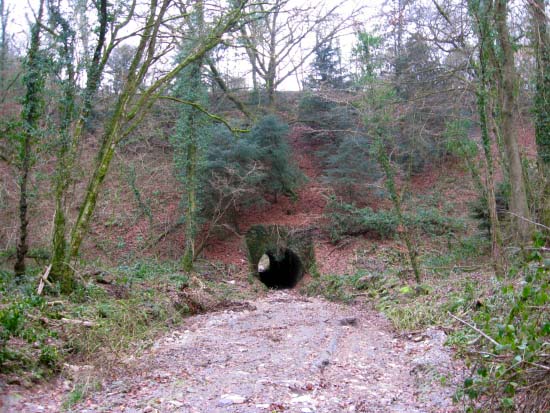
|
... which, as can be seen, looms large at the bottom of a small valley under a massive embankment, about ten feet high and wide enough to drive a small car through. This picture suggests that it is deceptively short due to the steep gradient on which it is built. Occasionally it is inaccessible due to the water going through it to the Wye, or the happily growing brambles, trees and stinging nettles. When it is accessible, it has a public footpath through it. In the Wye Valley, however, the markings for a public footpath don't mean much. One has been dug up for Tintern Quarry before crossing the railway trackbed somewhere where the track is still down. We have only ever seen it on a map. This one rolls down to the riverbank opposite another quarry and stops. Stone roads clamber up the hillside on each side of the embankment to provide access to the railway overhead. This culvert probably cost about £500 to build then before tipping the embankment on top. Change that now to £200,000. |
|
|
|
|
North of St Briavels 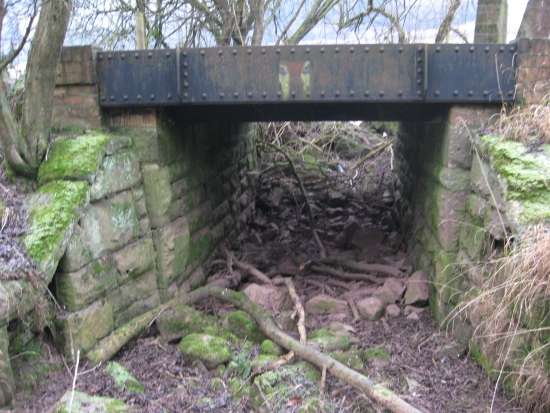
|
Between St Briavels and Whitebrook, there are two culverts of differing designs. This is the more northerly of the pair. The other is in better condition and has a concrete girder rather than a steel one, in a similar fashion to the last culvert on this page. Neither one has water running under it. This is possibly the worst condition culvert on the line. Behind is a wire fence and some trees, while in the foreground are the retaining walls, which look set to fall down. |
|
|
|
|
Whitebrook 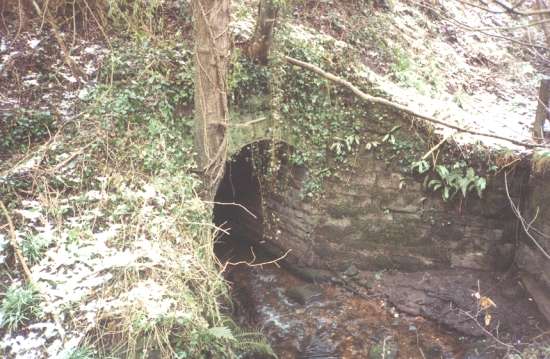
|
The first of the three between Whitbrook and Penallt, immediately north of Whitebrook Halt. It allows the stream from the Whitebrook valley to pass under the railway. The size can be guessed from the size of the ivy leaves - it is bigger than it looks. |
|
|
|
|
Between Whitebrook and Penallt (1) 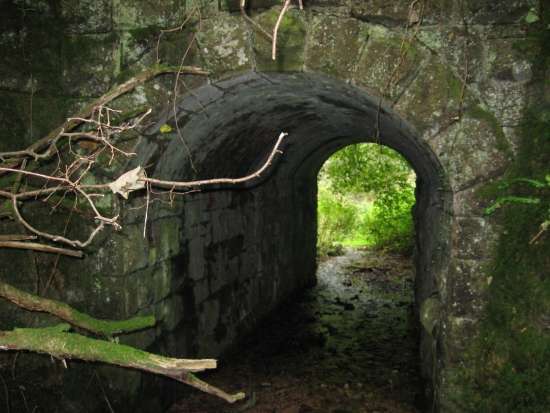
|
On top of this culvert is the trackbed, now in the form of an unsurfaced road from Penallt to Whitebrook with gates at each end. The culvert is a large stone arch for single track with retaining walls at either end, looking like a minature bridge. The side walls are built of stone with the railway crossing over on top. The linesides and culvert are now covered with rampant vegetation. |
|
|
|
|
Between Whitebrook and Penallt (2) 
|
A short way north of this is this concrete one, seen from the river side of the railway.The upper section is now a large chunk of concrete, although it could have been anything when the railway opened in 1876. |
|
|
|
|
Forest of Dean Central Railway 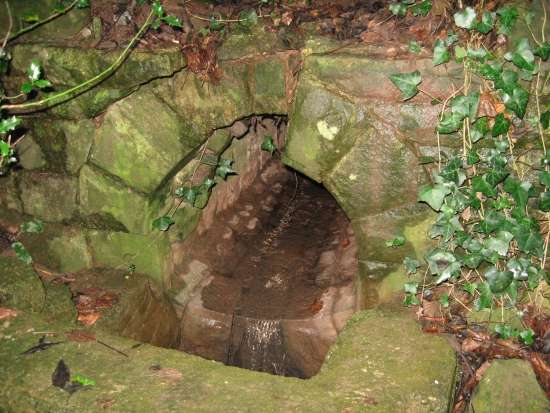
|
This is the size of a slightly more standard culvert. Unlike most of the ones along the WVR, it has water flowing through it. This slightly battered example of this essential aspect of railway engineering is on the long-abandoned Forest of Dean Central Railway between Awre Junction and Blakeney. The Forest of Dean Central was not averse to a little heavy expenditure on big culverts itself, however, with a culvert to match the one at the top of this page being built when the line had to cross the Blackpool Brook about halfway along its (ultimately never completed) 6-mile line to Foxes Bridge Colliery. That culvert saw rather less use than the WVR's and the railway over it was abandoned in 1921. The Blackpool Brook still obligingly uses it. |
|
Whether or not the railway would have survived if it hadn't built all these huge culverts (many over six feet high and all more than three feet across) is debatable, but it is highly unlikely that they helped. The extra £17,000 that was likely to have been spent on drainage with this sort of thing would have been very handy to the company. Nevertheless, in 2009 these constructions are over 130 years old and all in fairly good nick, so it must be said that they were built well. |
|
|
|